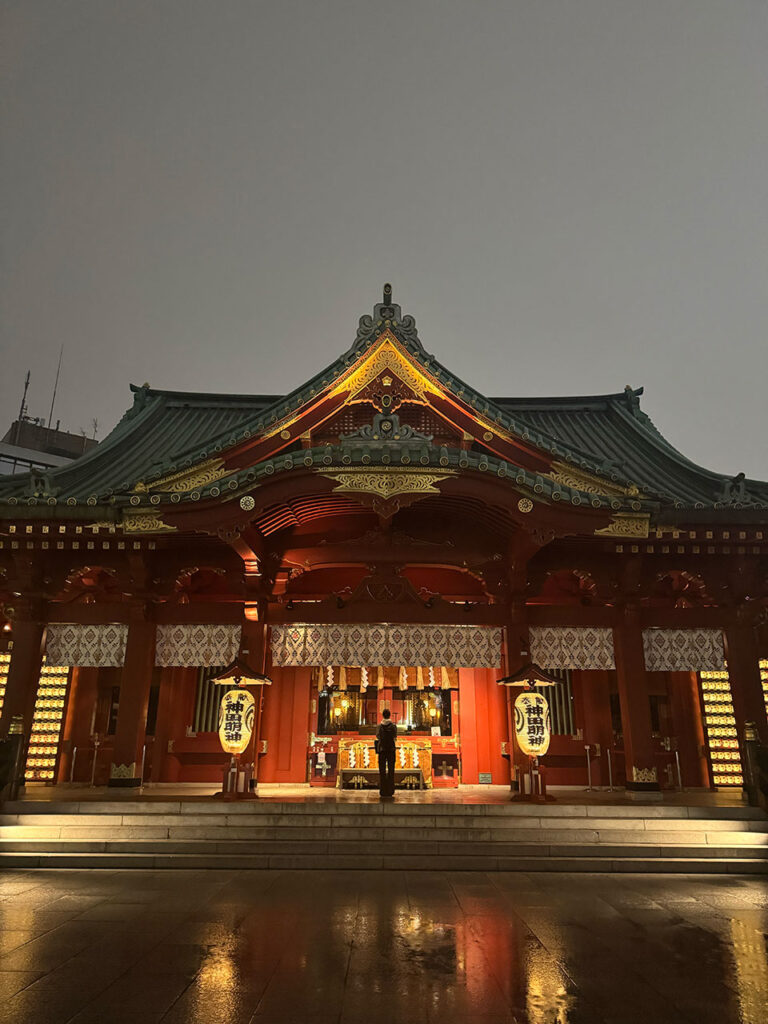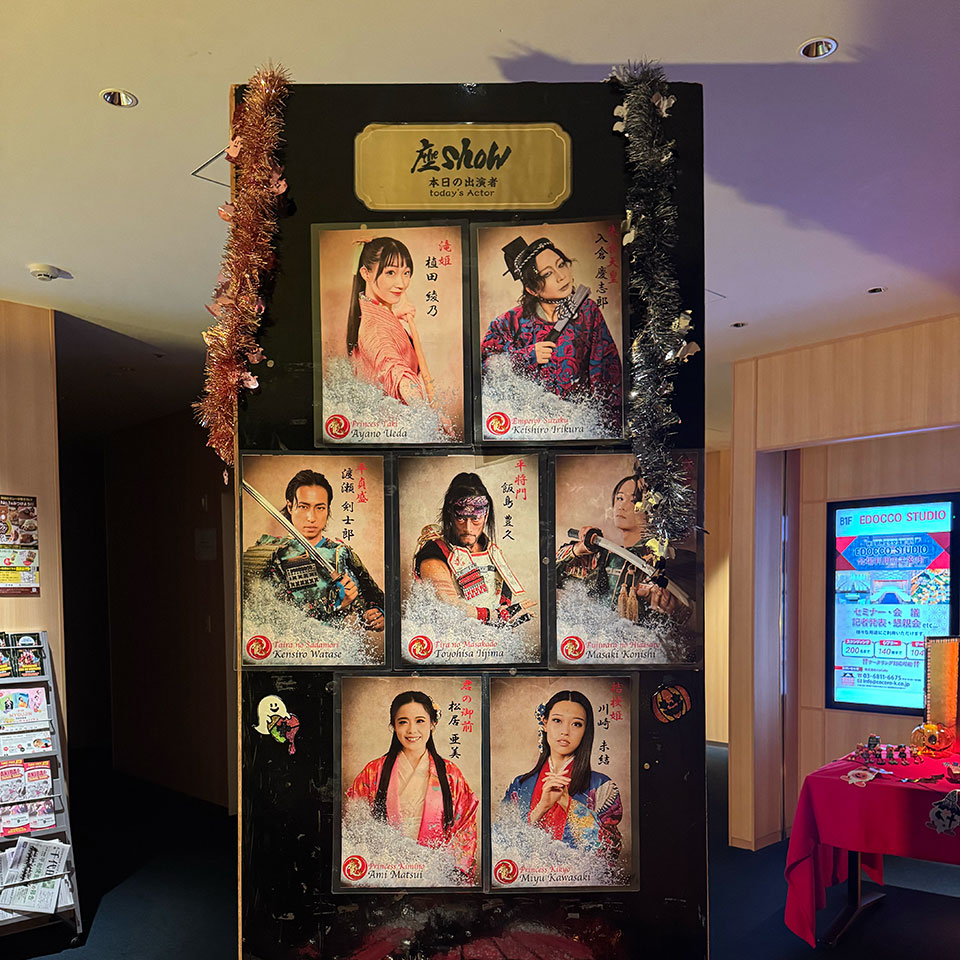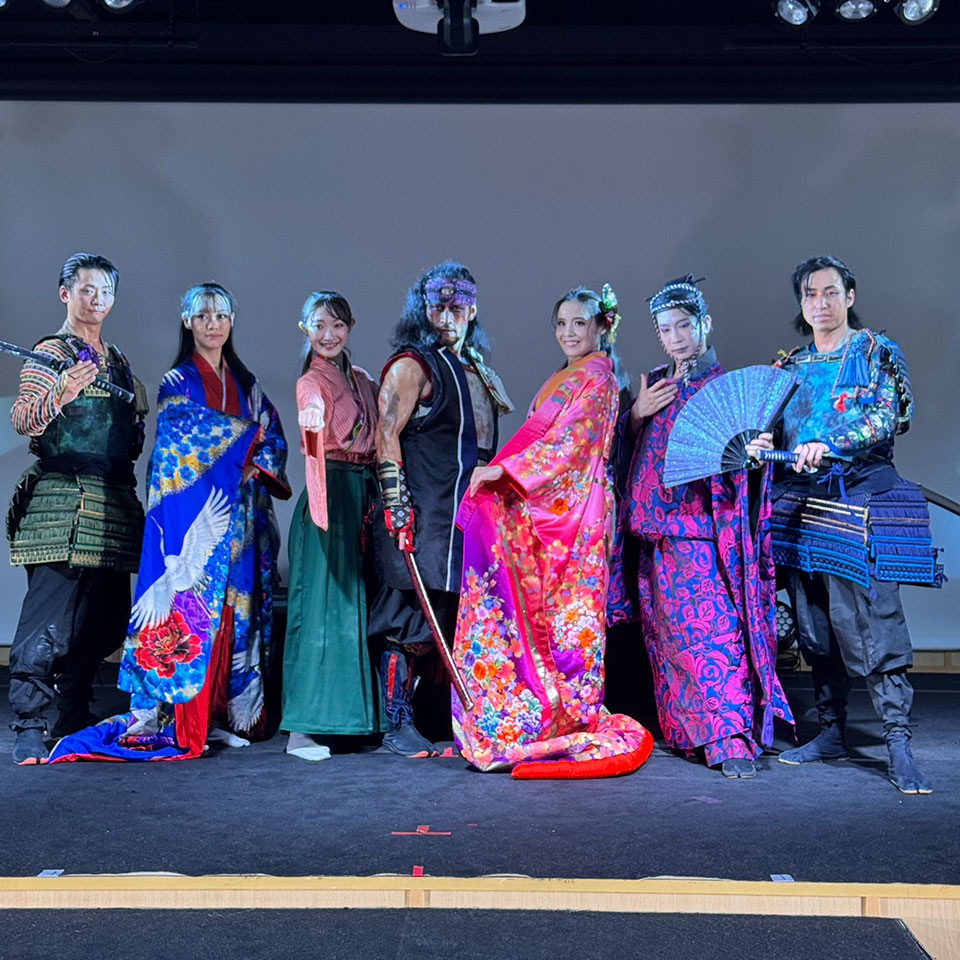One of Tokyo’s Samurai Performances: “THE SHOW – Taira no Masakado” at Kanda Myojin Shrine
Most samurai shows are set in the Sengoku or Edo period, but THE SHOW – Taira no Masakado takes you back much further — to the mid-Heian period, around the year 930. This was about 250 years before the Kamakura shogunate, when the imperial court still held great power.
Kanda Myojin Shrine
The performance takes place within the grounds of Kanda Myojin, a historic shrine located northeast of Edo Castle — the area once considered the “kimon,” or unlucky direction, believed to invite evil spirits. The shrine was originally built to protect the castle and was rebuilt in the 17th century during the Edo period.

Kanda Myojin enshrines the spirit of Taira no Masakado, a samurai who once rebelled against the central government.
Taira no Masakado (平 将門, died March 25, 940) was a Heian period provincial magnate (gōzoku) and samurai based in eastern Japan, notable for leading the first recorded uprising against the central government in Kyōto. Along with Sugawara no Michizane and Emperor Sutoku, he is often called one of the “Three Great Onryō of Japan”.
https://en.wikipedia.org/wiki/Taira_no_Masakado
Interestingly, the man who was once considered a traitor came to be worshiped later as a guardian deity of Tokyo — a fascinating turn of history.
THE SHOW – Taira no Masakado
The show starts at 8:15 p.m. and lasts about an hour. Doors open at 7:00 p.m., giving early arrivals a chance to chat with the cast before it begins. Seating is limited, and the audience tends to be about half Japanese and half international visitors. Photography is not allowed during the performance, but there’s a photo session afterward.


Rather than focusing purely on sword fighting (tate), the show feels closer to dance theater. The performers express deep emotion through movement, and the use of projection mapping to transform the stage adds a modern touch. I later learned that the digital backgrounds were AI-generated, which explained their slightly surreal atmosphere.
The story follows Taira no Masakado, a warrior from eastern Japan who defied the central government and met a tragic end in battle. According to legend, his daughter Princess Takiyasha became a sorceress to avenge him, and Masakado himself returned as a vengeful spirit.

One of the most famous legends tells that Masakado’s severed head flew through the air and landed in what is now Tokyo. Knowing that story made me wonder if the show would include that eerie moment.
Though the performance has no spoken dialogue, narration and subtitles make the plot easy enough to follow — though it might still be a little challenging for some visitors. Before the show begins, it’s worth checking the story summary and character chart provided at your table to better understand the relationships.

If you become fascinated by Masakado’s story, visit the Masakado Kubizuka (Masakado’s Head Mound) in Tokyo’s Otemachi district — a historical site that’s directly tied to the legend.

Leave a Reply